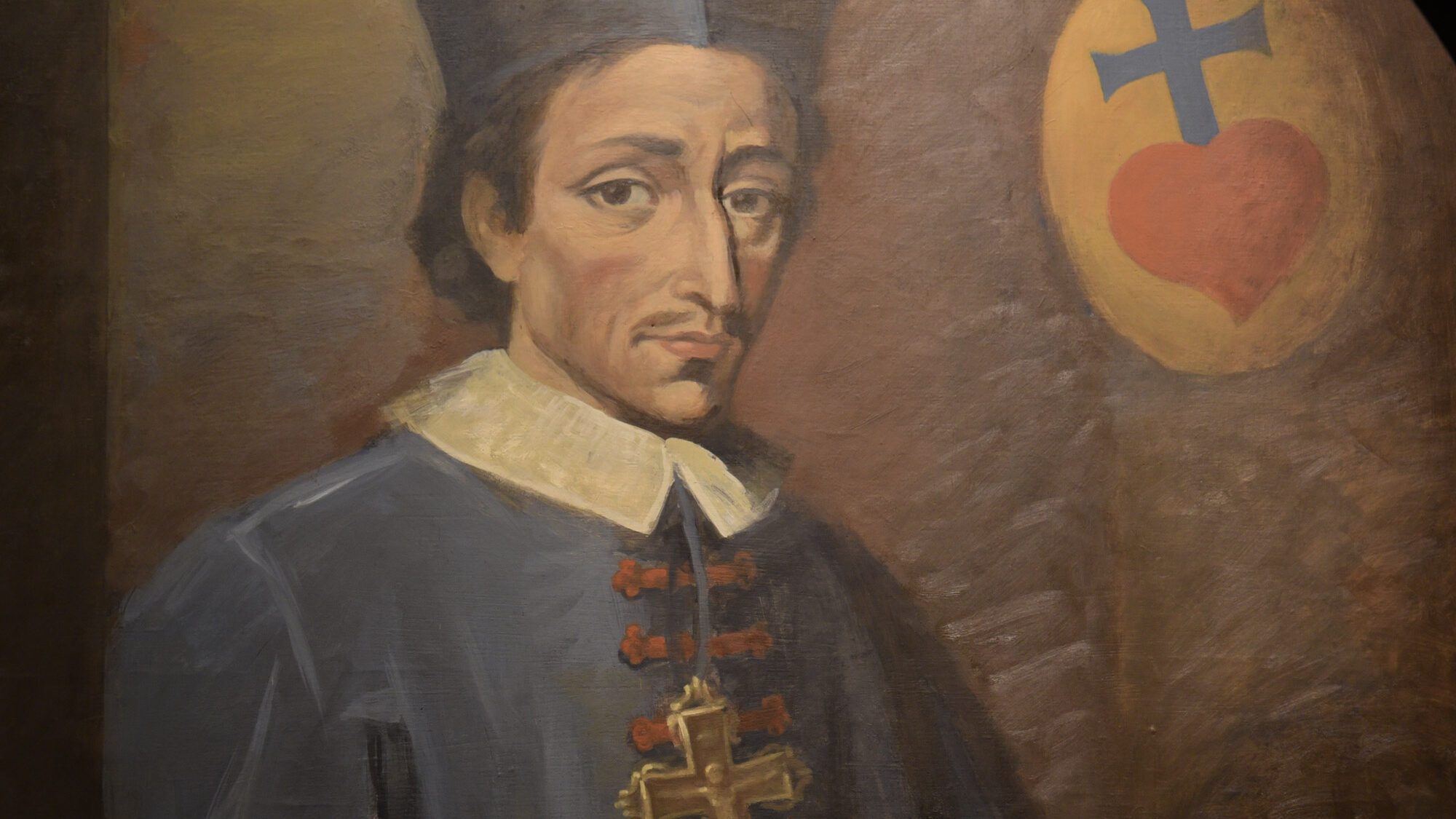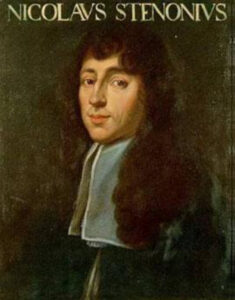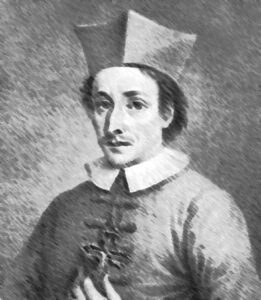
Blessed Niels Stensen was a brilliant scientist, Catholic convert, and devoted bishop and reformer. He was born to a Lutheran family in Copenhagen, Denmark in 1638. At the time of Niels’ birth, the long, complicated Thirty Years War was raging in much of Europe, including Denmark. Niels’ father, Sten Peterson, was a goldsmith, and came from a long line of Lutheran ministers in the Province of Scania. Niels was educated near his home, and his father died when he was seven. Niels was sent to live with a half-sister and her husband. The intellectually gifted young man decided to pursue a medical degree. Already fluent in five languages, he attended the University of Copenhagen. He became a skilled anatomist owing to his meticulous dissection methods, and his reputation became widespread. He completed his degree in 1664 at the University of Leyden.
GIFTED ANATOMIST

By the time of his graduation, Niels had made groundbreaking anatomical discoveries of the circulatory and lymph systems, muscles, and the functioning of the heart. It was he who discovered that the heart is actually a muscle. His research of the functioning of the thyroid gland was particularly important. He went to Paris, where he advanced studies of the brain and of embryology, gaining acclaim for his findings and continued his studies in Italy. In the seaport city of Liverno, he witnessed a Corpus Christi procession on June 25, 1666, which moved him deeply. He had begun having conversations with Catholics in Paris and had been rethinking some of the Lutheran teachings he had always held. While studying the teeth of a great white shark there, he hypothesized that fossils are formed in layers of rock, an idea previously unknown. He made sense of the fact that fossils of sea creatures were discovered in mountains. These findings formed the beginning of an entire field of science, geology.
THE ROAD TO CONVERSION
The process of Niels’ religious conversion had begun. He would spend his morning hours studying Scripture and the writings of the Church Fathers, and his afternoons studying geology. In Florence, he made friends with an elderly nun. He met with her daily for prayer and she explained to him the basis for the Church teaching about the Virgin Mary. In November of 1667, he was received into the Church.
After his conversion, Niels spent nearly two years touring the geological wonders of Europe, then returned to Florence. There he studied for the priesthood and was ordained in 1675. With his ordination, he made a private vow of poverty and lived on very little.
A DIFFICULT ASSIGNMENT

At the request of the Duke of Hanover in northern Germany, Father Stensen was appointed vicar apostolic for the Nordic missions in 1677. A month later, he was appointed titular bishop of Titiopolis. The region included was large, extending to the north of the Scandinavian countries, but very few of the people were Catholic. The following year, he was appointed suffragen (auxiliary) bishop of Münster in northwestern Germany. These successive appointments put Bishop Stensen in the very difficult situation of evangelizing in an overwhelmingly Lutheran part of Europe, where hostilities were still strong and priests were often apathetic or even corrupt. Committing himself to needed reform, he became more and more ascetic, often barefoot, sleeping in a simple chair, and fasting rigorously. He sold his Bishop’s ring and crucifix to give the money to the poor. He was a gifted preacher and was successful in bringing many people back to the Catholic Church. He drove himself to exhaustion, and made many enemies, especially among clergy who loved their luxuries. He endured the mockery of scientists who claimed that he left real science to immerse himself in the “lesser” science of theology. In 1683, he left Münster to protest the appointment of a bishop by simony. He went to Hamburg and continued to do missionary work and more scientific research. In 1686 he intended to return to Florence, but before his departure, he became seriously ill with a stomach ailment. On December 5, he passed away after much suffering at Schwerin, Germany at age forty-eight. He had so few belongings at the time of his death, his funeral was delayed for weeks until proper clothing for a bishop could be obtained. His remains were sent to Florence at the request of the Medici family and enshrined at the Basilica of San Lorenzo (Lawrence).
Also known as Nicolaus Stensen, Nicholas Steno or Nikolaus Stens, Niels Stensen used his considerable gifts in the service of both science and the Kingdom of God. His painstaking anatomical studies greatly advanced understanding of the functioning of the human body. As a servant of the Kingdom, he spent himself tirelessly for nine years in thoroughly Lutheran northern Europe to call people back to the timeless truths of the Catholic Church. Three centuries after his death, Danish faithful petitioned for his beatification cause. He was beatified in 1988, after the instantaneous healing of a cancer patient was attributed to his intercession. His life can stand as a refutation of the notion that the Catholic Church is anti-science. His feast day is December 5.
